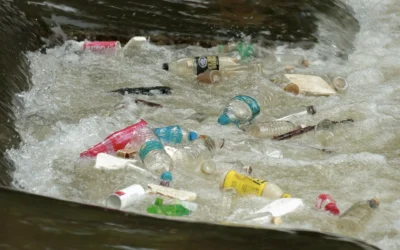Per-and Polyfluoroalkyl substances, collectively known as PFAS, is a group of manufactured chemicals coming under increasing scrutiny from the scientific community, regulators such as the US-EPA, and the general public.
So, what’s the way forward for these chemicals, the companies who make them, and those that use them in their products? And where does this leave the rest of humanity and nature?
Wonder materials – but with a dark side
First, it’s important to understand how widely PFAS materials have been used. Few industries have not been involved. Formulations of PFAS are used in non-stick cookware, breathable outerwear, cosmetics, medical devices, coatings and a host of other products.
Two points that come from this are:
There’s a lot of PFAS to deal with
Because it’s so widely used, PFAS shows up in industrial effluent, landfill leachate, municipal sewage treatment plant effluent, in drinking water, and many other places. Reports indicate that 45% of tap water in the US contains some PFAS, as does 98% of human blood. One problem facing people who remediate PFAS-impacted sites is that there’s so much PFAS floating in the air and flowing in the water already – what’s called “background” PFAS contamination.
It’s essential to life as we know it
One reason PFAS is so widely used is that it’s so tremendously useful in its thousands of variations. Its durability helps firefighting foam punch down hot fires of burning fuel. It’s important for making effective surgical stents that have saved countless lives. At a more mundane level, PFAS makes life convenient – it’s why your cheeseburger doesn’t stick to its wrapper, your omelette slides easily out of your non-stick frying pan, and your raincoat keeps you dry.
But given rising concerns about PFAS, and how it’s getting into what seems to be everything, what can the business community do? Here are some ideas on how to protect your business.
Understand the current reality
The US-EPA and other regulatory bodies around the world have started requiring companies to keep track of the PFAS that leaves their property – in the products they make, in their emissions to the atmosphere, and in their wastewater. The EPA has already prohibited the production of some specific PFAS varieties, and this list is likely to grow. It’s likely that regulators will prohibit the use of an expanding array of PFAS varieties.
Learn from history
For a look to the future for PFAS, look to how other problematic materials have been dealt with in the past.
Asbestos is a case in point. Once hailed as a wonder material for its fireproof characteristics, it was used in many applications including firefighters’ clothing. Then, greater understanding of the health risks caused asbestos to be regulated.
Consider also the Montreal Protocol of 1987, an international treaty to protect the ozone layer around the earth by phasing out the production of numerous substances responsible for ozone depletion. Due to its widespread application, the ozone hole over Antarctica is slowly shrinking.
These actions on asbestos and the threat to the ozone layer worked, in part, because there were materials available that could do the job, and substitutions could be made. It’s less clear in the case of PFAS, but there are steps that can be taken.
Use regulation wisely
Because of the advantages of PFAS and the fact that it’s so widely used, government regulation is one of the few levers strong enough to move the world into a future with less PFAS.
Reduce use of PFAS at source
Some applications of PFAS should be recognized as essential – perhaps in microchips, medical devices and other uses for which there is no substitute for PFAS, and the application has a high degree of urgency. This is not the case for all uses of PFAS, however. Regulators are getting understandably concerned that PFAS is being used in areas that are non-essential. As a result, the fast-food industry is working hard to find packaging alternatives that provide customer benefit but don’t come with the problems PFAS is starting to present.
Reduce PFAS in wastewater
Because of the utility of the many kinds of PFAS, these compounds are used in many industrial processes – not just in their products, but in the coatings, degreasers and other substances they use. This means that PFAS is to be found in the wastewater of many businesses. It’s to be expected that regulators will put more requirements on companies to reduce the amount of PFAS they are releasing. Onvector offers a technological solution that can break up the PFAS molecules.
Reduce PFAS hotspots
Some areas of PFAS impacts are of particular concern because of their threat to water supplies and the environment. These include areas used as firefighter practice areas, where PFAS may have soaked into the ground — including military bases, airports and municipal sites. Onvector’s technology has been proven effective in such situations.
Choose the right technology
Onvector uses Plasma Vortex technology to break up the PFAS molecules. Onvector’s technology is low in capital cost and operating cost, and uses readily-available components.
Contact us to learn if our technology is right for your application.
